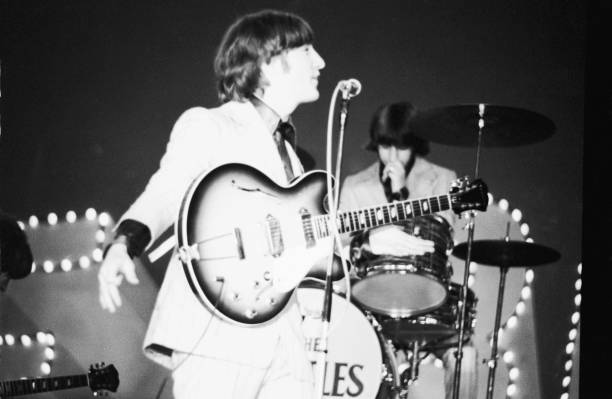In the vibrant heart of 1960s London, amidst the swirling currents of artistic innovation and social upheaval, John Lennon, the iconic musician and cultural provocateur, found himself drawn to the avant-garde world of the Robert Fraser Gallery. Located in Mayfair, this small but influential art space became a nexus for creativity, where Lennon's passion for visual art intersected with his musical genius, igniting a spark that would illuminate the cultural landscape for generations to come.

Robert Fraser, known affectionately as "Groovy Bob," was a charismatic figure whose eclectic taste and keen eye for talent made his gallery a magnet for the artistic elite of the era. From pop art icons like Andy Warhol to groundbreaking sculptors like Eduardo Paolozzi, Fraser's stable of artists pushed the boundaries of convention and challenged the status quo, mirroring Lennon's own quest for creative expression and social change.
It was against this backdrop of artistic ferment that Lennon first encountered Fraser and his gallery, finding in him a kindred spirit and a fellow traveler on the road to revolution. Drawn to Fraser's irreverent approach to art and life, Lennon quickly forged a friendship that would prove to be both transformative and tumultuous, shaping the trajectory of his artistic career in profound ways.

One of the most significant collaborations between Lennon and Fraser was the notorious "You Are Here" exhibition, held at the Robert Fraser Gallery in July 1967. Organized by Fraser and featuring works by renowned artists such as Richard Hamilton and Yoko Ono, the exhibition sought to explore the intersection of art, technology, and popular culture—a theme that resonated deeply with Lennon's own artistic sensibilities.
For Lennon, "You Are Here" represented an opportunity to break free from the constraints of traditional artistic mediums and explore new frontiers of creativity. Inspired by the experimental spirit of the exhibition, Lennon contributed a series of lithographs that reflected his fascination with surrealism and psychedelia, capturing the zeitgeist of the Swinging Sixties with bold colors and abstract forms.

But perhaps the most enduring legacy of Lennon's association with the Robert Fraser Gallery was his introduction to Yoko Ono, the avant-garde artist whose unconventional approach to art and activism would profoundly influence his life and work. It was at Fraser's gallery that Lennon first encountered Ono's groundbreaking conceptual art pieces, including her provocative "Cut Piece" performance, which challenged notions of power, control, and vulnerability.
Fascinated by Ono's fearless commitment to her artistic vision, Lennon was drawn to her magnetic presence and unapologetic authenticity. Their initial meeting at the Robert Fraser Gallery marked the beginning of a transformative partnership—one that would not only redefine the boundaries of art and music but also inspire a generation to embrace love, peace, and radical self-expression.

As Lennon's relationship with Ono deepened, so too did his involvement in the burgeoning countercultural movement of the late 1960s. Together, they used their platform to advocate for social justice, peace, and human rights, leveraging their celebrity status to shine a spotlight on issues ranging from war and poverty to environmental degradation and racial inequality.
In the years that followed, Lennon's connection to the Robert Fraser Gallery remained a constant source of inspiration and support, even as he navigated the highs and lows of fame, fortune, and personal turmoil. Despite Fraser's untimely death in 1986, his legacy lived on in the hearts and minds of those who had been touched by his vision and his passion for art and innovation.

Today, the Robert Fraser Gallery stands as a testament to the enduring spirit of creativity and collaboration that defined an era—an era in which John Lennon and his fellow artists dared to dream of a better world, where art and music could serve as catalysts for social change and collective transformation. And though Lennon may no longer walk among us, his legacy lives on in the indelible mark he left on the cultural landscape of the 20th century and beyond—an eternal reminder of the power of art to inspire, provoke, and unite us all.
(See more photos below)





























